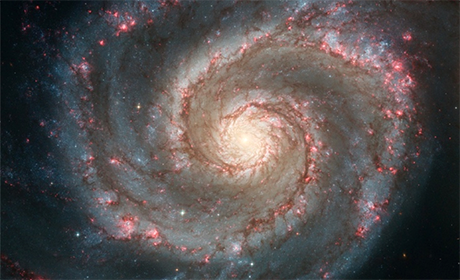Heidelberg Astrophysicist Obtains Emmy Noether Group
23 August 2016

Photo: Hubble Space Telescope Science Institute
A new Emmy Noether research group at the Centre for Astronomy of Heidelberg University (ZAH) has started working on the physics of star formation in galaxies across cosmic time spans. The research team, led by Dr Diederik Kruijssen, is investigating the physical processes of galaxy formation in early ages of the universe. The German Research Council (DFG) has allocated 1.2 million euros to fund the group, located at the ZAH’s Institute for Astronomical Computing, over the next five years. This research group expands the existing “MUSTANG“-group, which Dr. Kruijssen established at the ARI when he joined the ZAH as the new Gliese Fellow.
“The main uncertainties in our understanding of how galaxies form are the unknown physics of star formation in gas clouds and the resultant feedback from massive stars,” says Dr Kruijssen. His group is aptly known as "MUSTANG – Multi-Scale Star Formation Across Nascent Galaxies". The researchers combine central observational surveys on gases and young stars with state-of-the-art numerical simulations of star and galaxy formation to explore fundamental open questions.
Diederik Kruijssen started his research at the universities of Utrecht, Leiden and Cambridge as a Toptalent Fellow of the Dutch research council NWO. In 2011 he earned his PhD in astrophysics at Utrecht University and in 2013 was awarded a prize by the Royal Netherlands Academy of Arts and Sciences for the best PhD thesis. Dr Kruijssen worked as a post-doctoral research fellow at the Max Planck Institute for Astrophysics in Garching near Munich. In summer 2015 Dr Kruijssen came to Heidelberg University as a new research group leader and the new Gliese Fellow, which is a ZAH grant for excellent postdocs in the field of astronomy and astrophysics.

